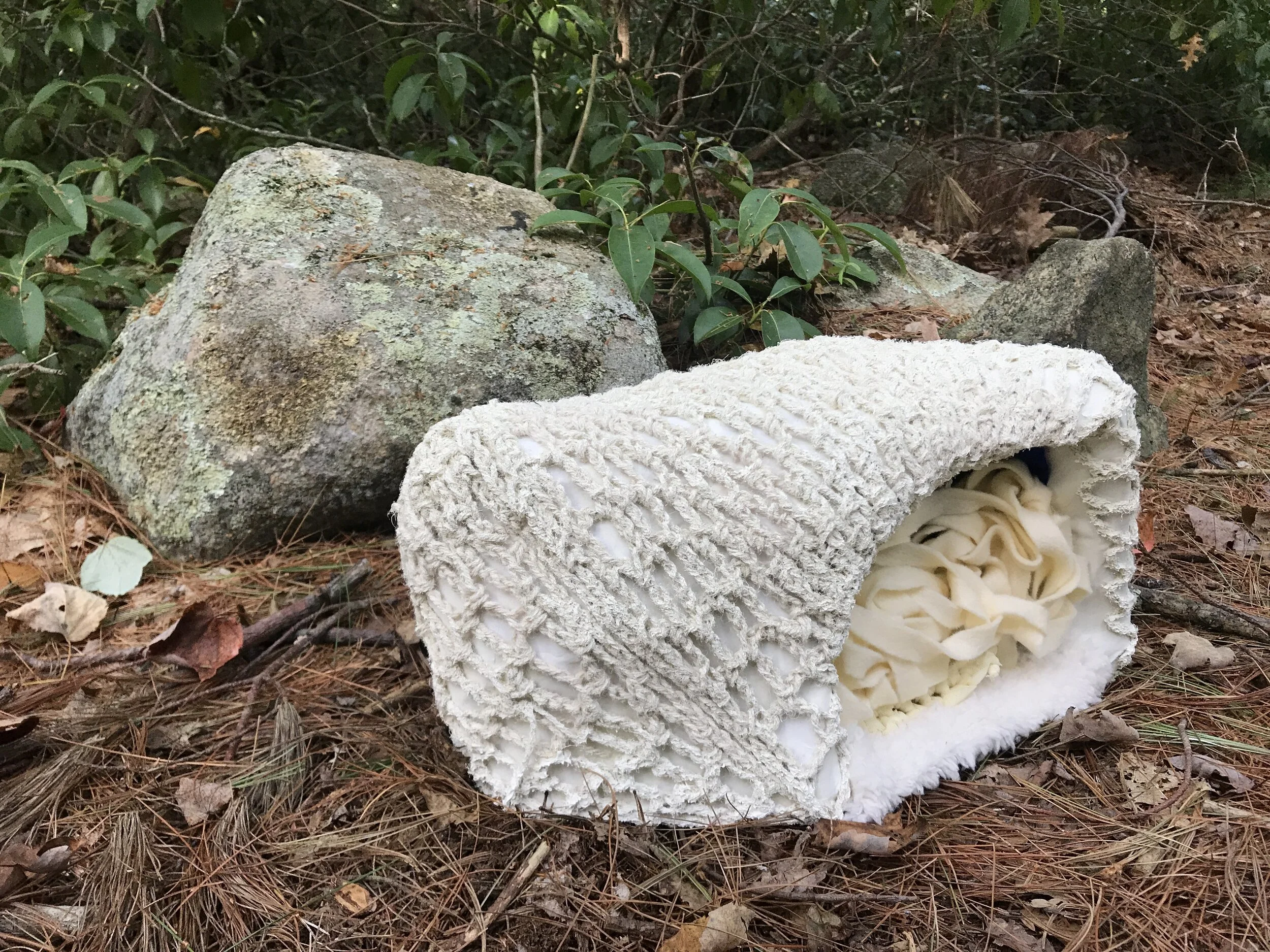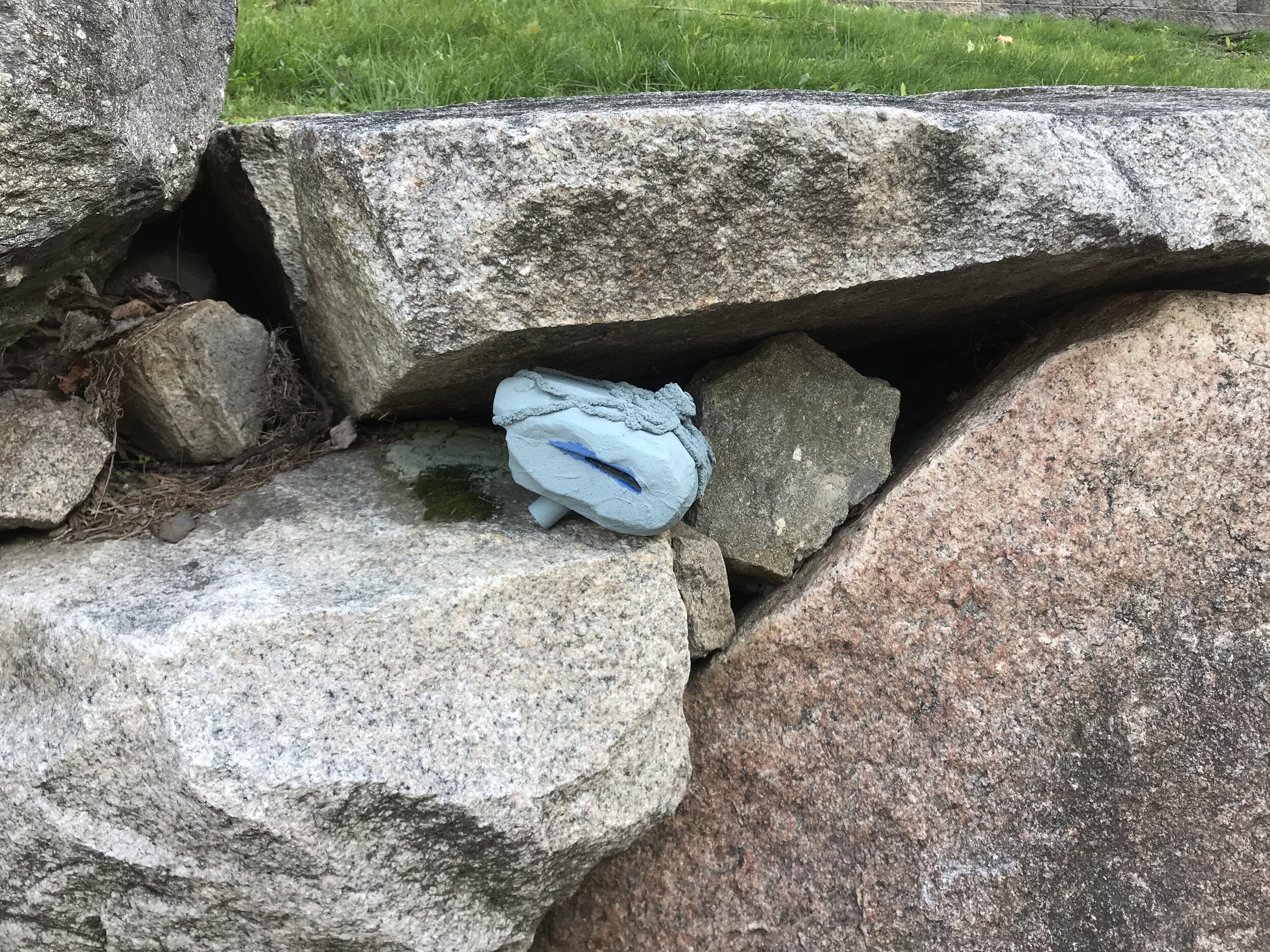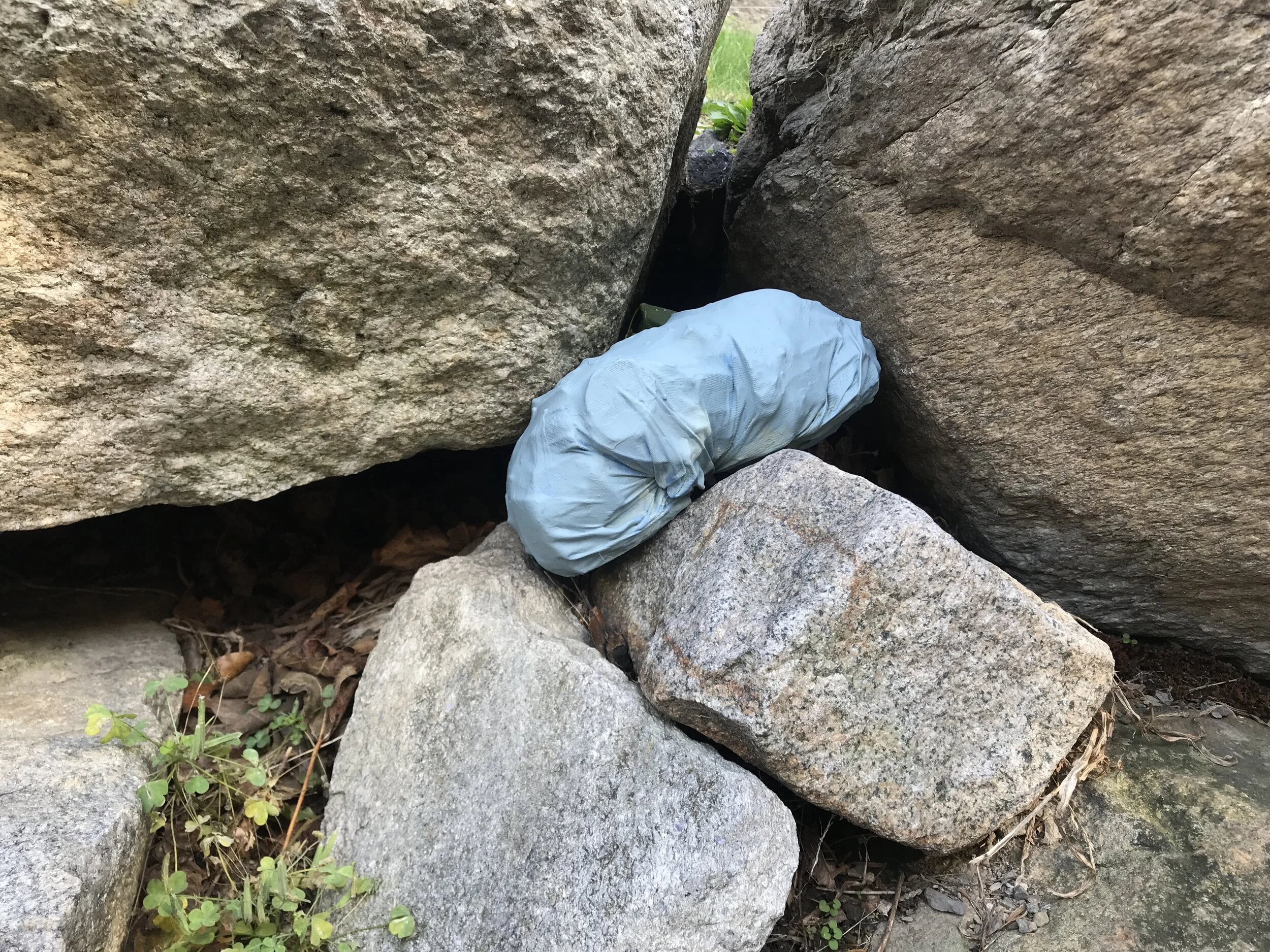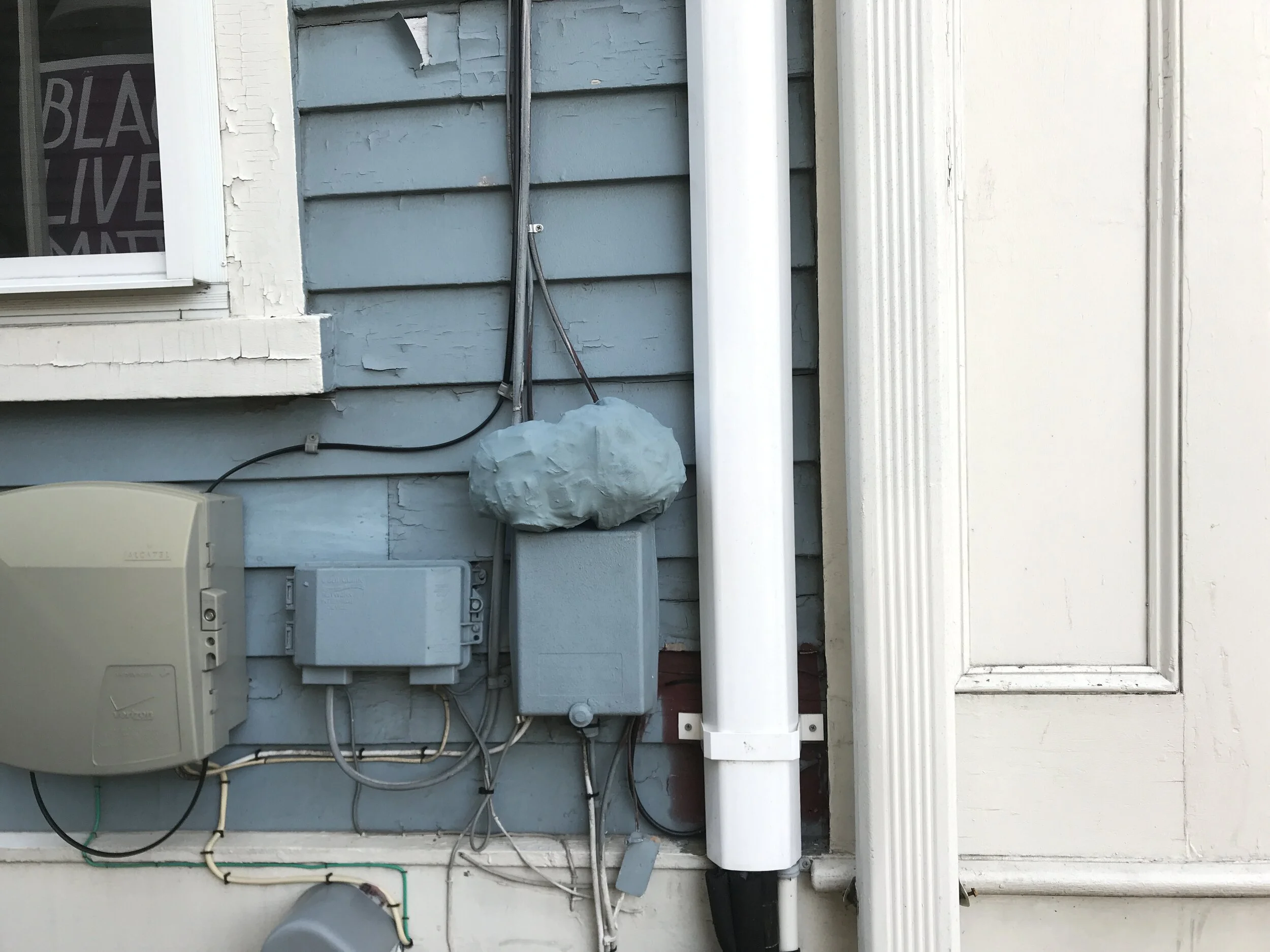While researching sheep in New England, I became interested in how fieldstone walls, created as a way for settler-colonist farmers to contain livestock such as sheep, live on today as aesthetic objects often stripped of their origin story. A commonly accepted narrative is that they were made by English settler-colonists farmers, indentured servants and enslaved people who cleared land for crops and created pens for livestock animals, including sheep, which were the first animals brought to New England by the colonists. The fieldstone walls delineated land ownership based on the colonists’ economic system, visually proclaiming pockets of land as private property and dramatically transforming the ecosystem from forest to field. I am fascinated by the history of these walls and how they persist as neutralized aesthetic objects, fully enmeshed in our visual conception of New England. In this ongoing project, Fieldstones, I make textile sculptures inspired by the stones, which I install in real stone walls and colonial architecture around New England.














